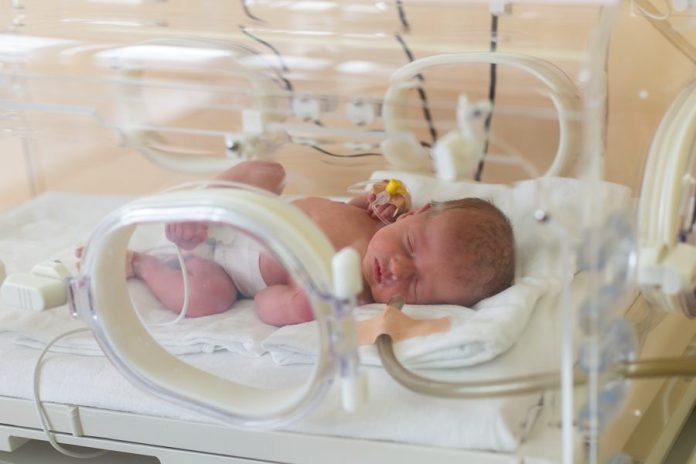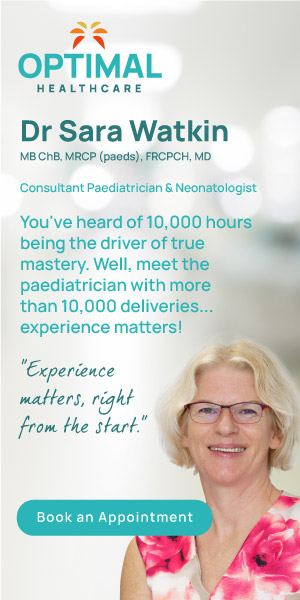Based on a Freedom of Information request by Cayman Compass, we learned that Cayman has a caesarean section rate more than double the level recommended by the World Health Organisation (WHO). A significant 37% of our annual births are by C-section, against a WHO recommended rate of 10% to 15%, based on recommendations from the International Health Community. Shocking though the figure is, it represents only a partial reflection on a more complex story.
A HIDDEN STORY
The headline rate of 37% hides the devil in the detail by portraying what is in fact an absolute proportion, and thus avoiding the wider question of what makes it up. Surprisingly, the rate of C-sections at Health Services Authority appears to be similar to the private sector, calling into question the obvious debate about whether the higher rates come from private sector OBGYN’s, given the attractiveness of a faster delivery mode at a conveniently scheduled time. In reality, the rates are high across both public and private sectors. The question not addressed is whether various individual OBGYNs have markedly different rates.
The headline rate of 37%, or around 308 births out of the 832 recorded births last year, as an absolute proportion, is, of course, made up of the individual OBGYN rates. It is in effect an average. We have 22 registered OBGYNs from many different countries and cultures, including some with much lower rates, such as the Netherlands – where rates based on 2017 or closest year, reported in 2019 OECD health monitoring, show a 16.2% annual C-section rate. The Netherlands is also blessed with a low Maternal Mortality rate of just 3.0 per 100,000 live births, again from OECD data. Other countries and cultures have higher rates. For instance, the average rate in Europe is around 25% and the United States has a rate of 31.7%, again using OECD data. If one OBGYN has a lower rate of C-section, then the 37% is only achieved by another having a still higher rate, on what is already a very high rate.
The call for an audit to examine the very high rate is clearly a sound one. An alternative might be for individual OBGYNs to publish their rates of C-section, accepting that this can also be biased by different OBGYNs catering for different case mixes.
The question is just how much it matters?
[/et_pb_text][/et_pb_column][/et_pb_row][et_pb_row _builder_version=”4.6.6″ _module_preset=”default”][et_pb_column type=”4_4″ _builder_version=”4.6.6″ _module_preset=”default”][et_pb_text ul_position=”inside” _builder_version=”4.6.6″ _module_preset=”default” custom_margin=”||40px|||”]IS A HIGH C-SECTION RATE A PROBLEM?
In fact, the question is not whether it matters, it is to whom does it matter? And it is a complex question.
Each pregnancy is unique, the majority progressing without complications and some facing challenges along the way. There are maternal factors to consider too, along with the health and wellbeing of the baby. There are clearly indications for a C-section, where it can be part of a plan specifically to improve safety, the common ones being:
- Twins or multiple births generally
- Maternal health concerns
- Fetal distress requiring immediate delivery
- Complications from diabetes
- Previous C-sections
- Breech birth
In these scenarios, it may be advisable to deliver by C-Section for either the mother’s or the baby’s safety. But what about when there are no obvious medical indications?
At a superficial level, this is a question that appears to be answered by the WHO themselves, who state that women undergoing C-sections can be reassured that “Caesarean section has become a very safe procedure in many parts of the world to the point of considering it almost infallible”. However, the key phrase here is ‘superficial level’ and if it was that easy, why does the WHO recommend, advocate and indeed campaign for a 10% to 15% rate?
The answer is not about maternal safety. In developed nations, including the Cayman Islands, maternal complications from C-sections are very low. However, the purpose of pregnancy and delivery, including choice of delivery mode, is to end up with a safe and healthy mum AND baby, the latter thriving in both early and later life. And this is where the issue lies.
[/et_pb_text][et_pb_text _builder_version=”4.6.6″ _module_preset=”default” custom_padding=”||0px|||”]INTERVIEW WITH DR SARA WATKIN, NEWBORN SPECIALIST
[/et_pb_text][/et_pb_column][/et_pb_row][et_pb_row column_structure=”1_2,1_2″ _builder_version=”4.6.6″ _module_preset=”default” custom_padding=”0px|||||”][et_pb_column type=”1_2″ _builder_version=”4.6.6″ _module_preset=”default”][et_pb_video src=”https://vimeo.com/566734392″ _builder_version=”4.6.6″ _module_preset=”default”][/et_pb_video][/et_pb_column][et_pb_column type=”1_2″ _builder_version=”4.6.6″ _module_preset=”default”][et_pb_text _builder_version=”4.6.6″ _module_preset=”default”]We caught up with Dr Sara Watkin, Consultant Neonatologist and Paediatrician at Integra Healthcare Ltd, a specialist in newborn care and indeed complications, with decades of experience in attending deliveries of all types, but with the health of the baby as her primary focus. Dr Watkin was Chief of Service for Neonatal Care at the World-renowned University College London Hospitals NHS Foundation Trust, a service that cared for some of the most complex newborn infants and particularly, a leading centre for birth asphyxia and other birth complications. She has seen quite a number.
[/et_pb_text][/et_pb_column][/et_pb_row][et_pb_row _builder_version=”4.6.6″ _module_preset=”default” custom_margin=”21px|auto||auto||”][et_pb_column type=”4_4″ _builder_version=”4.6.6″ _module_preset=”default”][et_pb_text _builder_version=”4.6.6″ _module_preset=”default” custom_margin=”||9px|||” custom_padding=”||0px|||” hover_enabled=”0″ sticky_enabled=”0″]CREATING UNNECESSARY RISKS TO NEWBORNS?
[/et_pb_text][et_pb_text _builder_version=”4.6.6″ _module_preset=”default”]So, the reason for the recommendations appears to be in the higher rate of complications to the baby, some of which are life threatening and some of which can lead to significant respiratory problems in childhood and later life.
Neonatal Respiratory Distress Syndrome (RDS) appears to be nearly six times more likely following elective C-section than a vaginal delivery, a matter made worse by the practise of delivering babies by C-Section before 39+0 weeks of gestation (V Zanardo et. al. Acta Paediatr 2004). Neonatal RDS and even its milder precursor, Transient Tachypnoea of the Newborn, can lead to respiratory complications in childhood, including wheeze attacks and asthma, and potentially problems later in life too.
AN UNCOMFORTABLE QUESTION
That leaves an uncomfortable question for parents, and especially those OBGYNs with high C-section rates in pregnancies with no specific medical indications; How do you balance or justify the convenience of a scheduled, elective, and often early, operation that has no medical indication, however safe, with the known and established evidence that it creates an avoidable, and sometimes serious, risk for the newborn baby, that has resulted in the WHO setting advised rates well under half what we are achieving in the Cayman Islands?
It’s a question that’s currently rhetorical, but perhaps it needs to become a debate, based on evidence and the balance of needs. Ultimately, a mum needs to discuss her birth preferences and plans with her OBGYN to establish what is feasible, safe and advisable, but mums can only make informed choices if they are indeed informed. Currently, in uncomplicated pregnancies without risk factors, the evidence says there’s a 6-fold increased risk of respiratory distress to the newborn infant. The WHO strives for an all-pregnancies C-section rate of between 10% and 15% – the sweet spot that improves fetal-material mortality but beyond which there is no further improvement and where the higher rates introduce new risks.




